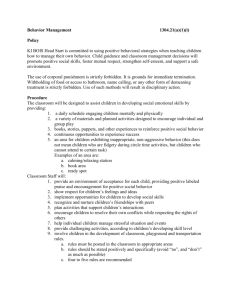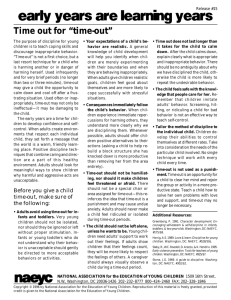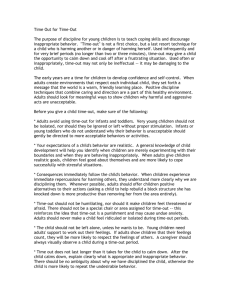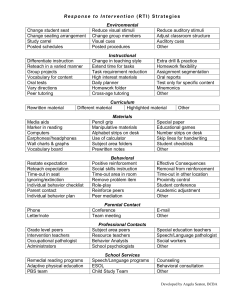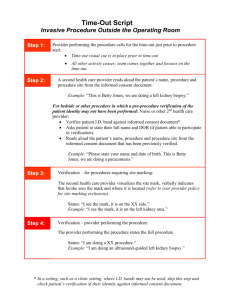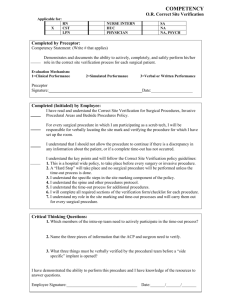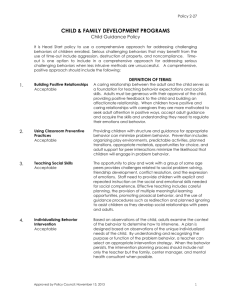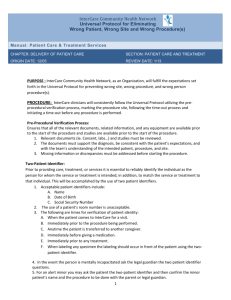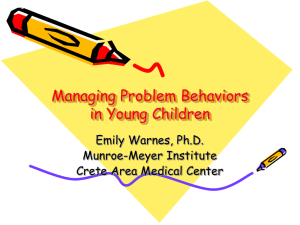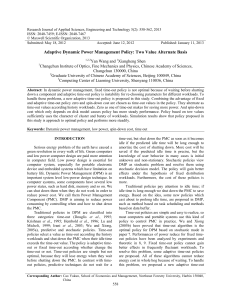Time Out for "Time-Out"
advertisement
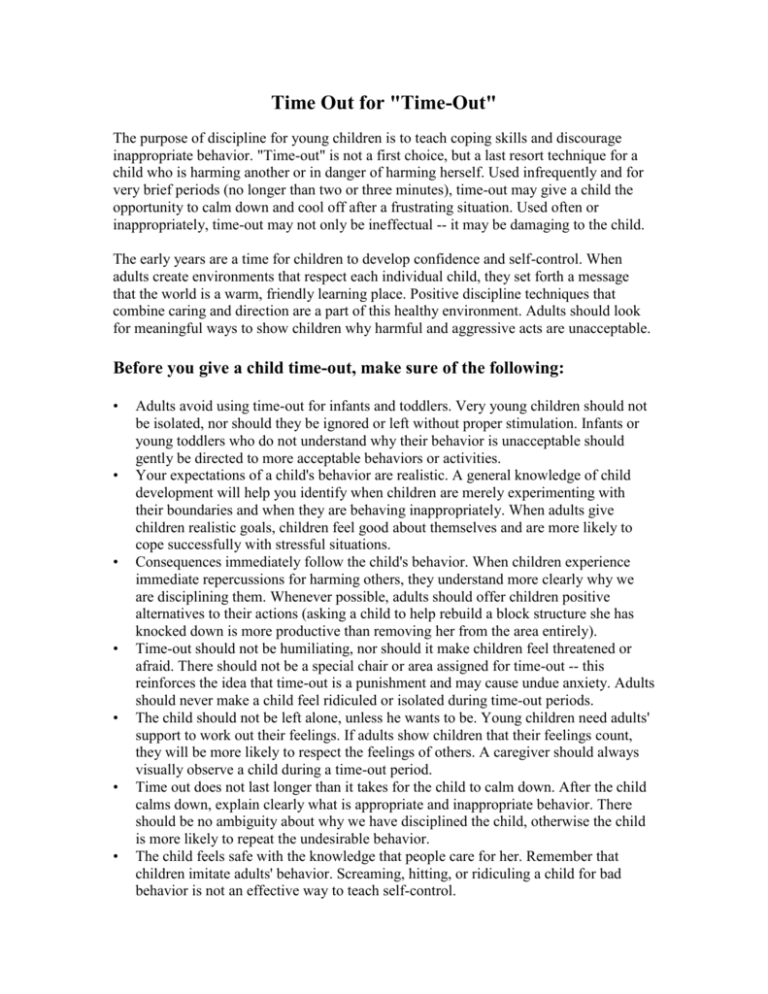
Time Out for "Time-Out" The purpose of discipline for young children is to teach coping skills and discourage inappropriate behavior. "Time-out" is not a first choice, but a last resort technique for a child who is harming another or in danger of harming herself. Used infrequently and for very brief periods (no longer than two or three minutes), time-out may give a child the opportunity to calm down and cool off after a frustrating situation. Used often or inappropriately, time-out may not only be ineffectual -- it may be damaging to the child. The early years are a time for children to develop confidence and self-control. When adults create environments that respect each individual child, they set forth a message that the world is a warm, friendly learning place. Positive discipline techniques that combine caring and direction are a part of this healthy environment. Adults should look for meaningful ways to show children why harmful and aggressive acts are unacceptable. Before you give a child time-out, make sure of the following: • • • • • • • Adults avoid using time-out for infants and toddlers. Very young children should not be isolated, nor should they be ignored or left without proper stimulation. Infants or young toddlers who do not understand why their behavior is unacceptable should gently be directed to more acceptable behaviors or activities. Your expectations of a child's behavior are realistic. A general knowledge of child development will help you identify when children are merely experimenting with their boundaries and when they are behaving inappropriately. When adults give children realistic goals, children feel good about themselves and are more likely to cope successfully with stressful situations. Consequences immediately follow the child's behavior. When children experience immediate repercussions for harming others, they understand more clearly why we are disciplining them. Whenever possible, adults should offer children positive alternatives to their actions (asking a child to help rebuild a block structure she has knocked down is more productive than removing her from the area entirely). Time-out should not be humiliating, nor should it make children feel threatened or afraid. There should not be a special chair or area assigned for time-out -- this reinforces the idea that time-out is a punishment and may cause undue anxiety. Adults should never make a child feel ridiculed or isolated during time-out periods. The child should not be left alone, unless he wants to be. Young children need adults' support to work out their feelings. If adults show children that their feelings count, they will be more likely to respect the feelings of others. A caregiver should always visually observe a child during a time-out period. Time out does not last longer than it takes for the child to calm down. After the child calms down, explain clearly what is appropriate and inappropriate behavior. There should be no ambiguity about why we have disciplined the child, otherwise the child is more likely to repeat the undesirable behavior. The child feels safe with the knowledge that people care for her. Remember that children imitate adults' behavior. Screaming, hitting, or ridiculing a child for bad behavior is not an effective way to teach self-control. • Tailor the method of discipline to the individual child. Children develop their abilities to control themselves at different rates. Take into consideration the needs of the particular child involved. No single technique will work with every child every time. Time-out is not used as a punishment. Time-out is an opportunity for a child to clear her mind and rejoin the group or activity in a more productive state. Teach a child how to solve her own problems with love and support, and timeout may no longer be necessary. Additional Resources: Greenberg, P. 1991. Character development: Encouraging self-esteem & self-discipline in infants, toddlers, & two-year-olds. Washington, DC: NAEYC. #175/$8. Honig, A.S. 1989. Love & learn: Discipline for young children. Washington, DC: NAEYC. #528/50¢. Slaby, R., W.C. Roedell, D. Arezzo, & K. Hendrix. 1995. Early violence prevention: Tools for teachers of young children. Washington, DC: NAEYC. #325/$7. Stone, J.G. 1969. A guide to discipline. Washington, DC: NAEYC. #302/$2. * Developed by The National Association for the Education of Young Children, 1996.
